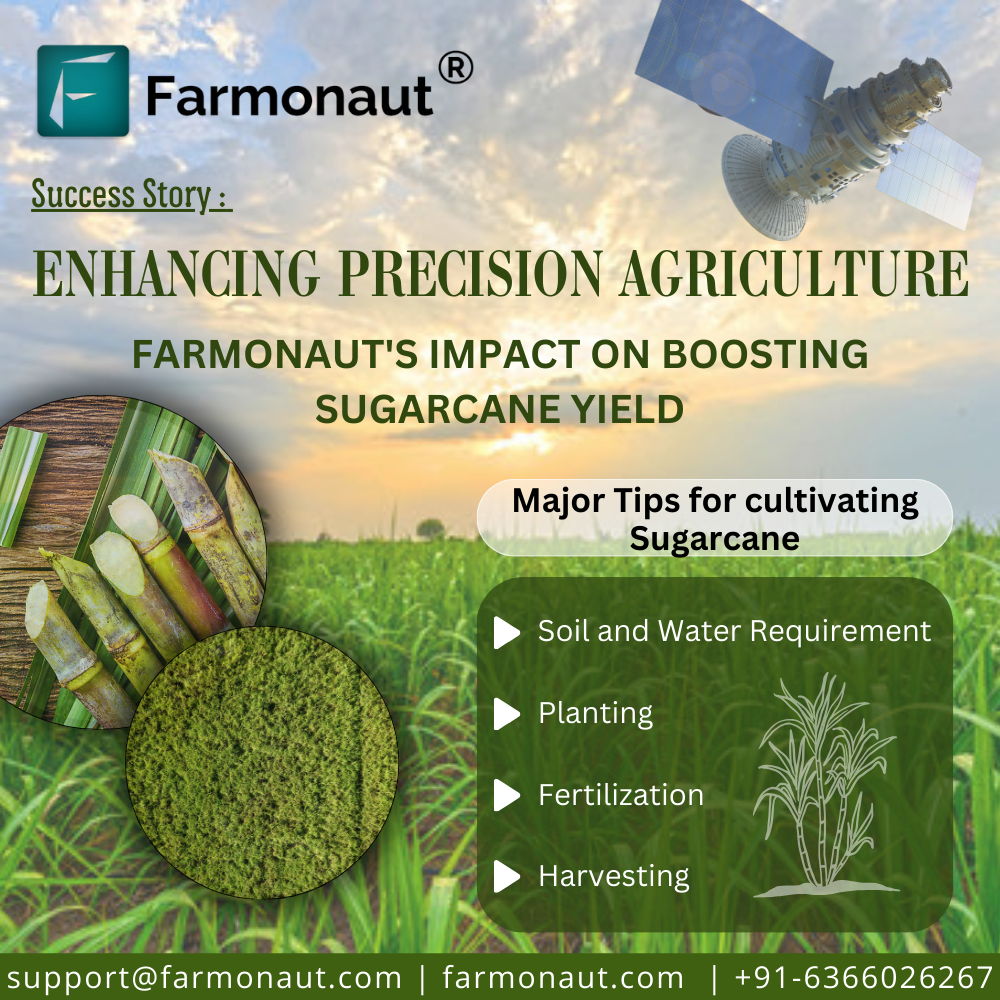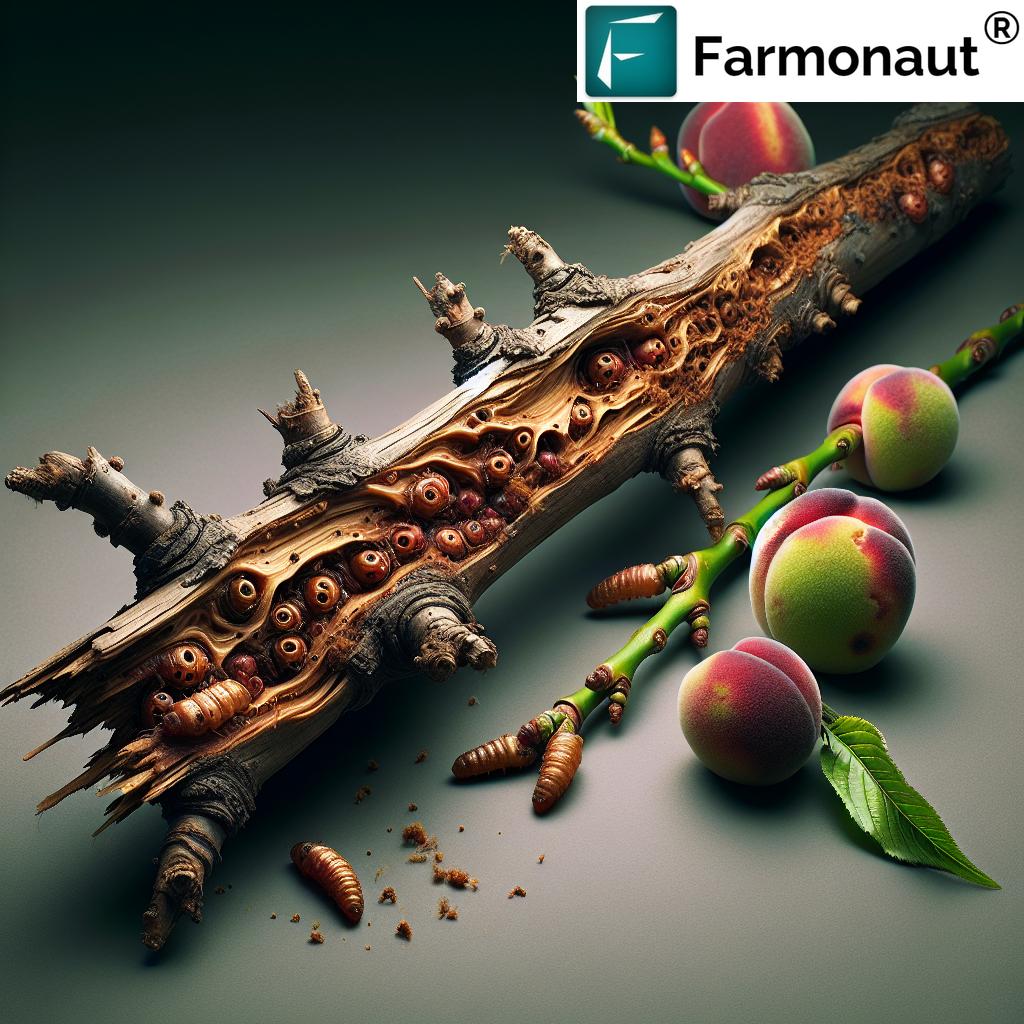Are Cheap Moisture Meters Any Good? 2025 Powerful Guide
Introduction: Accurate Moisture Measurement in Modern Agriculture
In 2025, agriculture and forestry have become intricately connected with technology and innovation. The quest for higher productivity, improved product quality, and long-term environmental sustainability depends on the ability to measure critical variables—none more influential than moisture. The question “Are cheap moisture meters any good?” is top-of-mind for farmers, foresters, and agricultural professionals who want reliable, affordable, and data-driven solutions for their management tasks and crop care.
This comprehensive article explores:
- The value, reliability, and limitations of cheap moisture meters in professional and hobbyist settings
- The advanced role of the baler moisture monitor in hay and crop baling operations
- Whether wood chips are good for mulch in diverse soil and forestry environments
- Modern best practices, technology solutions, and Farmonaut’s contribution to satellite-driven agriculture
By reflecting on the state of technology in 2025, we help you make informed choices—whatever your expertise, budget, or scale of operation may be.
Are Cheap Moisture Meters Any Good – Evaluating Value & Technology in 2025
Cheap Moisture Meters: Appeal, Operation & Core Limitations
The widespread use of moisture meters in farming, forestry, and biomass industries reflects a growing awareness of how moisture content directly influences crop health, storage stability, and overall product quality. As market options multiply, cheap moisture meters—often priced below $50—have gained traction for their affordability and simplicity. They appeal to hobbyists, gardeners, small-scale farmers, or facilities that need basic information with minimal investment.
Cheap meters generally fall into two categories:
- Pin-Type Moisture Meters: These rely on basic electrical resistance by inserting metal probes into a sample (such as hay, soil, wood, or chips). The resistance between probes varies with moisture level, which the device translates into a reading.
- Capacitance-Based Meters: Using flat plates or sensors, these measure changes in the dielectric property of a material, offering non-invasive readings, particularly useful for packaged or baled products.
Effectiveness & Reliability: What Do Cheap Meters Offer?
Pros:
- Affordability: Low cost allows access for resource-constrained users.
- Ease of Use: Simple operation, with straightforward displays.
- Portability: Lightweight and suited for rapid, preliminary assessments.
Cons:
- Limited Accuracy & Precision: Results are often within a 3-6% error margin, insufficient for critical decisions that depend on tight tolerances (e.g., baling or grain storage).
- Durability Concerns: Pin probes can bend, break, or degrade in dense or heterogeneous samples (such as mixed hay or fibrous wood chips).
- Lack of Calibration: Most models lack adjustment features for soil types, crop species, temperature, or density effects.
- Variable Readings: Non-uniform samples (e.g., dry and wet patches) can produce inconsistent results, leaving room for costly mistakes or spoilage.
- Data Limitations: No recording, analysis, or integration with modern farm management software.
Where Cheap Meters Fit: Best Practices & Use Cases
Cheap meters serve best as educational tools, spot-check devices, or for non-critical tasks—for instance, checking indoor plant soils or quick field tests before more rigorous sampling. For professional agricultural and forestry contexts, their value is in providing rapid feedback but they should not be solely relied upon when financial, storage, or quality risks are high.
- Preliminary testing of firewood, compost, or small hay batches
- Gardeners gauging soil readiness for watering
- Demonstration in training workshops for students and new professionals
In tasks where the financial outcome or product stability is at stake—such as large-scale hay baling, commercial grain handling, or timber processing—accurate, calibrated instruments with integrated data features are now considered essential in 2025.
2025 Market Trends: Cheap Moisture Meters vs. Advanced Technology
Market research in 2025 reveals strong growth in affordable tooling, yet major agri-businesses and progressive family farms are moving toward integrated solutions, such as:
- Advanced baler moisture monitors with real-time alerts
- Satellite and AI-powered measurement platforms
- Multi-parameter devices detecting temperature, density, and moisture content for smart storage and logistics
Summary Table: Moisture Meter Types & Suitability
| Device/Material | Estimated Price Range (USD) | Accuracy Level (%) | Technology Used | Typical Applications | Durability (Years) | Pros & Cons (Summary) |
|---|---|---|---|---|---|---|
| Cheap Moisture Meters | $15 – $50 | 85–90% | Pin-type (Electrical Resistance), Basic Capacitance Sensors |
Soil, Hay, Wood, Garden Crops (Spot Checks) | 1–2 |
+ Affordable, portable, easy to use – Limited accuracy, not suitable for commercial storage/critical baling – Lacks calibration/data recording |
| Baler Moisture Monitors | $900 – $3,500+ | 96–99% | Advanced Capacitance/Conductivity, Algorithms, Integrated Sensors | Hay Baling, Grain Baling, Commercial Feed Storage | 5–10 |
+ Real-time, accurate, integrates with machinery/data systems – Higher initial cost, requires technical setup |
| Wood Chips for Mulch | Varies (Often Free – $50/ton) | Not applicable (Depends on application & source) |
Natural Material; Potential Monitoring with Satellite/Field Sensors | Soil Health, Mulching, Forestry, Orchards, Pathways | 2–5 (depends on chip size & climate) |
+ Reduces evaporation, retains moisture, sustainable disposal – Can immobilize nitrogen, needs careful source selection |
Baler Moisture Monitor: Advancements & Role in Modern Hay Management
Precise moisture measurement is critical in hay and forage management. The baler moisture monitor has become indispensable for farmers seeking to preserve feed quality and minimize spoilage risks.
- Overly wet bales (moisture above 18–20%) risk mold, fermentation, nutrient loss, or even spontaneous ignition during storage.
- Overly dry bales (below 12%) suffer excessive leaf shatter, reducing nutritional value and profitability.
How Baler Moisture Monitors Work
Integrated within modern baling operations, the baler moisture monitor employs:
- Dual or multiple sensors: Placed within the bale chamber to sample forage moisture content continuously as each bale forms
- Advanced algorithms: Compensate for temperature, density, and crop species for enhanced precision
- Real-time displays: Enable operators to abort or continue baling based on optimal moisture levels
- Data export: Integrate with farm management software or mobile devices for analytics and traceability
Key Benefits of Modern Baler Moisture Monitors (2025)
- Maximize hay quality: Prevents costly nutritional and financial losses
- Improved safety: Minimizes fire hazards from wet bales in storage
- Reduces labor: Eliminates subjective guesswork and repeated manual sampling
- Data-driven management: Historical moisture logs inform future harvesting and storage decisions
- Integration: Modern balers connect with AI-driven analytics platforms for further automation
Baler Moisture Monitor vs Cheap Moisture Meter
When comparing a baler moisture monitor vs cheap moisture meter:
- Accuracy is paramount: Baler monitors are highly calibrated (within 1–2% error), essential for commercial storage and regulatory compliance
- Long-term cost savings: Reduced spoilage, insurance claims, and feed rejections quickly offset the higher upfront investment
For professional agriculture, baler moisture monitors have become the industry standard by 2025.
Evolution of Baler Moisture Tech: What’s New in 2025?
- Wireless connectivity: Real-time monitoring and analytics accessible on mobile or web apps
- AI-driven forecasts: Predict the best harvesting windows based on current weather, soil moisture, and crop conditions
- Integration with satellite monitoring platforms: For coordinated field-wide decision-making
The synergy of machine-based moisture sensing and satellite data is revolutionizing precision agriculture.
Are Wood Chips Good for Mulch? Benefits, Challenges & Best Practices
With increasing interest in sustainable soil management, the question “Are wood chips good for mulch?” is both pertinent and practical. In modern agriculture and forestry, wood chip mulch remains a top choice for:
- Moisture retention: By reducing soil evaporation, especially in dry climates or precision irrigation systems
- Weed suppression: Thick layers deter weed growth physically and light-wise
- Organic matter increase: As chips decompose, they enrich the soil with stable carbon and nutrients
- Soil temperature moderation: Insulates roots from temperature extremes
- Reduced compaction & erosion: Coarse texture buffers against heavy rain and improves soil structure
- Sustainable waste use: Converts tree trimming, forestry byproducts, and landscaping waste into beneficial products
By 2025, research and practice confirm that wood chips—especially from locally sourced, non-allelopathic tree species—offer significant long-term benefits when applied at proper thickness (5–10 cm), replenished annually, and managed to avoid direct soil incorporation in sensitive crops.
Potential Downsides & How to Avoid Them
- Nitrogen immobilization: Fresh chips, especially from softwoods or small particle sizes, may tie up soil nitrogen temporarily as microbes break down high-carbon residues. Remedy: Combine with composted chips or supplement nitrogen fertilizer as recommended.
- Allelopathic effects: Some tree species (e.g., black walnut, eucalyptus) contain natural chemicals that may inhibit sensitive crop species. Solution: Use chips from non-allelopathic sources and avoid applying under vulnerable crops.
- Water infiltration issues: Very thick or compacted mulch layers can impede water reach. Recommendation: Maintain porous, loosely spread mulch and monitor moisture beneath mulch regularly. Cheap moisture meters or, even better, satellite moisture maps can monitor this efficiently.
Chips vary in their decomposition rates, with hardwoods breaking down more slowly for wider durability and softwoods faster for quicker organic matter turnover.
Best Practices When Applying Wood Chip Mulch in 2025
- Maintain a 2–4 inch layer around trees/plants, keeping mulch a few inches from the trunk to prevent rot.
- Replenish annually for maximum moisture retention and weed suppression.
- Mix with compost or aged manure if rapid nitrogen is needed for demanding crops.
- Regularly monitor soil moisture levels using sensors, meters, or satellite tools for optimum irrigation scheduling.
Applications in Agroforestry, Orchards, and Biomass Energy
In commercial forestry operations and orchard management, mulching with wood chips is directly linked to long-term soil health improvement and site rehabilitation. Additionally, chips serve as a valuable feedstock for biomass energy and as soil amendments for degraded agricultural land.
Summary: Are Wood Chips Good for Mulch?
Yes. When sourced and applied wisely, wood chips for mulch are among the most cost-effective, sustainable, and beneficial choices available in modern agriculture and forestry in 2025.
Comparative Feature & Value Table: Cheap Moisture Meters vs Baler Moisture Monitors vs Wood Chip Mulch
2025 Technology Trends: Precision, Satellite Monitoring & AI in Agriculture
As the industry moves forward, the limitations of cheap moisture meters are being addressed by:
- Advanced baler moisture monitor systems: Higher accuracy, durability, and data integration capabilities
- Satellite-based soil monitoring: Leveraging multispectral imaging to capture large-scale moisture content variation for field-wide management
- AI and machine learning models: Predict moisture trends, estimate irrigation needs, and analyze long-term soil and crop health signals
- Blockchain traceability: Verifies data authenticity for insurance, loans, and sustainable product supply chains (see Farmonaut’s blockchain-powered traceability)
These tools optimize water use, preserve product quality, and maintain environmental health.
From Field to App: Digital Transformation

Monitor crop moisture, soil health and field performance with the Farmonaut Web App
For custom integrations and data pipelines, developers and agri-tech platforms can utilize:
- Farmonaut Satellite Data API – Directly access processed soil moisture, crop health, and environmental datasets for your systems.
- API Developer Documentation – In-depth reference for technical teams building innovative solutions.
Farmonaut’s Role: Enhancing Precision Agriculture & Sustainability
At Farmonaut, we recognize that precision, reliability, and actionable insights empower farmers, foresters, and professionals to achieve new heights in food production, resource management, and environmental stewardship. Our mission is to democratize access to advanced satellite and AI-driven monitoring via user-friendly web, Android, and iOS applications.
Our tools, such as:
- Satellite-based moisture monitoring for fields, forests, and infrastructure
- AI-powered advisories for irrigation and soil management
- Blockchain-supported traceability for verified product movement
- Real-time carbon footprinting and environmental impact tracking
…are designed to work seamlessly with on-ground sensors, baler moisture monitors, and manual testing to provide the best possible combination of rapid feedback, field-specific recommendations, and long-term sustainability benefits.
Committed to innovation, we also support financial access for agricultural businesses through satellite-verified crop loans & insurance, helping growers secure their investments and sustainability.
Frequently Asked Questions – Cheap Moisture Meters, Baler Monitors, Wood Chips & More
Q1: Are cheap moisture meters any good for farm use?
Cheap moisture meters are practical for spot checks and non-critical assessments, but their limited accuracy and durability often make them unsuitable for high-value commercial agriculture or forestry tasks. For critical applications like hay baling, grain storage, or timber processing, advanced calibrated instruments or baler moisture monitors are strongly recommended.
Q2: How does a baler moisture monitor improve hay quality?
A baler moisture monitor provides real-time, highly accurate moisture readings during baling. This prevents baling overly wet or dry hay, which helps preserve nutritional quality, reduces spoilage and fire risk, and ultimately minimizes financial loss.
Q3: Are wood chips good for mulch in all types of soils?
Yes, wood chips are good for mulch in most soils, but it’s crucial to match chip type and application method to soil and plant needs. Avoid thick layers of uncomposted softwood chips for nitrogen-sensitive crops, and exclude chips from allelopathic species near sensitive plants. Regularly monitor soil moisture and replenish mulch as needed.
Q4: Can modern farm management software integrate with baler moisture monitors or satellite data?
In 2025, many farm management systems can integrate with baler moisture monitors via wireless connectivity, and with platforms like Farmonaut via web, mobile, or API access, combining hardware data with satellite analytics for comprehensive decision making.
Q5: Do wood chips mulch cause nitrogen deficiency in crops?
Fresh, undecomposed wood chips can temporarily tie up nitrogen near the soil surface as they decompose. This effect is minimal when mulch is surface-applied and not mixed into the soil. Supplement with compost or nitrogen fertilizer if rapid plant growth is desired.
Q6: Are there affordable alternatives to cheap moisture meters that are more accurate?
Yes! While cheap meters are limited, mid-range options with better calibration features, wireless data export, or integration with field sensors are now available. Satellite-driven field moisture mapping also offers affordable, broad-acre solutions in 2025.
Q7: How do I choose the right moisture measurement solution for my operation?
Consider your scale of operation, precision requirements, financial risk, and environmental context. For spot checks or non-critical tasks, cheap meters may suffice. For production-scale operations, integrated baler moisture monitors, field sensors, and satellite platforms like Farmonaut are ideal.
Conclusion: Striking the Right Balance for Modern Agriculture & Forestry
By 2025, moisture measurement has become a vital foundation for productivity, quality, and environmental sustainability in agriculture and forestry. Cheap moisture meters offer value in their simplicity and cost, but fall short when accuracy, durability, or data integration is required.
For hay baling and other critical management tasks, baler moisture monitors have proven to safeguard product value and operational safety through real-time, precise moisture readings—ensuring hay, grain, and biomass products meet storage and quality standards.
Meanwhile, the application of wood chips for mulch is firmly established for soil health improvement, organic matter retention, and water conservation. Thoughtful selection, sourcing, and management of mulch maximize environmental returns.
As the sector embraces technology and innovation, the integration of AI, machine learning, and satellite-based platforms like Farmonaut enables users to make the most informed, sustainable choices. To optimize returns, users should balance investment in advanced monitoring tools with adherence to agricultural best practices, and leverage digital solutions for data-driven, future-ready farming and forestry.
Farmonaut Subscription Pricing Table
For users seeking advanced crop monitoring, soil moisture analytics, and large-scale field management, Farmonaut offers flexible and affordable subscription plans accessible directly via web, app, or API.
Ready to monitor your fields, optimize operations, and implement best practices with trusted data?













